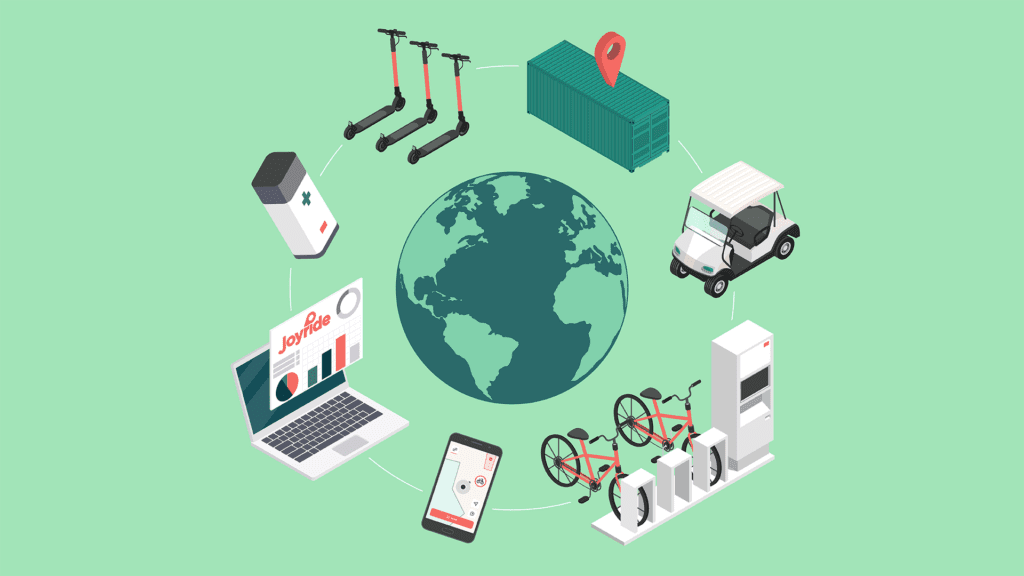After months of murky predictions on the toll COVID-19 will take on the transportation sector, it’s become increasingly clear that micromobility vehicles are playing a vital role in post-lockdown life. In fact, global data reports show that shared mobility is redefining how people move now and how cities want their streets to move forward in the long term. As one example, McKinsey & Company recently predicted that scooter-share operators can expect profits to increase by up to 5% in the “next normal” as demand for two-wheelers is once again meeting—and even exceeding—pre-pandemic levels.
3D-printed e-bikes, autonomous scooters and pedal bike bonanzas: micromobility hardware is quickly innovating, and so is the software behind it. The pandemic has caused mobility software to put new emphasis on certain areas in order to meet the altered needs of riders, businesses and cities. As software providers, we’re seeing a focus on four main points that will ultimately reshape the industry for good:
1. More in-app mapping functionality
With bike sales soaring and thousands of miles of protected cycling lanes launching worldwide, routing software is going to become increasingly crucial for riders. The ability to find cycle-friendly routes within a bike-share and/or scooter-share user app will be the new norm, which is why Joyride has integrated with Beeline to offer customized navigation experiences. Beeline’s city-specific compasses sync with Joyride’s white-label rider app to provide users with geo-targeted bike routes. At the point of unlocking a vehicle, riders can receive a choice of optimized in-app navigation based on the actual experiences of other riders nearby, making for a truly shared experience. Knowledge-based navigation tools like Beeline will also be increasingly effective when it comes to vehicle parking compliance. Plus, more mapping-software tie-ins can potentially lead to reduced insurance costs for micromobility businesses that offer this service, since they will be providing riders with safer alternatives to busy street traffic.
2. Software that supports retail and restaurants
Retail businesses and restaurants have seen significant disruptions as in-person leisure dining and shopping came to a virtual halt several months ago. On-demand food delivery has been paramount during these times, and software has played a crucial role in enabling micromobility entrepreneurs to rent out vehicles, track them and accept payment from delivery riders. Restaurants are reopening, but food-delivery systems aren’t going anywhere. Just Eat’s recent $7.3-billion acquisition of Grubhub is a prime example of further investment in the on-demand meal landscape, and expect the software that supports it to evolve along with it. Meanwhile, we’re seeing many shared mobility operators running geo-targeted promotions and advertisements for local businesses that have been impacted by the lockdowns (using Joyride’s Email and SMS Campaign in-app feature). Aside from supporting local economies, syncing with bricks-and-mortar retail is a way for operators to strengthen their community presence and earn extra revenue through customized and on-brand campaigns.
3. Intelligent infrastructure will stand out
As more micromobility vehicles hit the road, software will become an even more powerful tool in keeping them there. Rather than businesses renting large, expensive warehouses to store uncharged vehicles, software is being harnessed for operational efficiencies in the form of docking stations and teleoperated vehicles. Software-integrated stations allow riders to access locations in their app and then unlock vehicles by scanning a QR code. We anticipated earlier this year that standalone electric charging stations for e-bikes and scooters will be more commonplace on city roads–and the current climate is continuing to substantiate this notion. Two weeks ago, Swiftmile announced an additional $5-million investment to deploy additional smart-charging stations in more U.S. cities. Charging hubs increase the efficiency and frequency of rentals, which in turn make vehicle access more widespread.
4. Rentals that think long-term
The daily commute may never be the same. Over the next several months, people will continue to opt for social distance-friendly bikes and electric scooters in lieu of public transit and ride-hailing services. Personal vehicle ownership is already significantly on the rise. Dutch e-bike maker VanMoof, for one, has already seen a 600% sales increase over last April. As fears around mass transit strengthen, longer term micromobility rentals beyond one hour or one day will be more in demand. Software is central to this business model succeeding by enabling people to order vehicles directly from their phones and allowing operators to track vehicle rentals, send users messages, accept payments and set geo-fencing parameters. While shared mobility systems in their original form aren’t going anywhere, reports are indicating that scooter rental trip durations are lengthening. If endless rental periods are readily at their fingertips, riders will be even more inclined to keep micromobility momentum alive.
We expect additional software features and services to emerge as a direct result of the coronavirus pandemic, especially as micromoblity takes a center stage in global recovery efforts. Want to stay in the loop with Joyride’s ongoing software announcements and third-party integrations? Subscribe to our monthly newsletter here.






